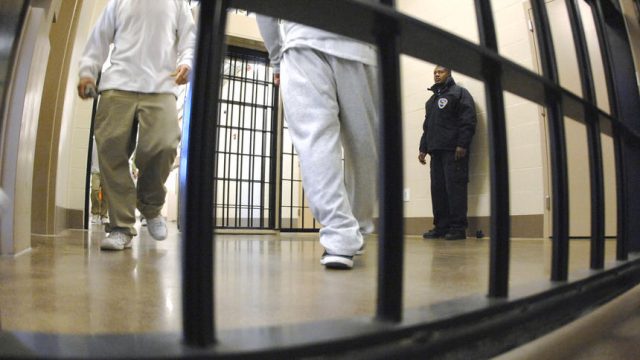‘Build More Jails’ Is Not a Sustainable Solution to the Drug Addiction Problem

There is a significant debate in North Dakota right now circling around prison overcrowding and how we treat drug abuse in the criminal justice system.
Some including Leann Bertsch, director of the North Dakota Department of Corrections, want put more emphasis on addiction treatment instead of incarceration.
Others, unfortunately, seem to like the status quo. Among them law enforcement representatives who attended a recent meeting with Senator John Hoeven in Mandan which focused on opioid abuse. Their opinion on the matter?
Literally, build more jails (emphasis mine):
Local and federal law enforcement convened in Mandan on Tuesday by U.S. Sen. John Hoeven, R-N.D., stressed the importance of prosecution and prison time — not just treatment — as a response to the growing opiate problem in the state.
“Treatment is very, very inefficient,” said Jeffrey Stamm, director of Midwest High Intensity Drug Trafficking Area, a federal program that assists local law enforcement in targeting drug crime.
“Most folks enjoying their run on heroin or opiates don’t want treatment,” he said. “One of the best prevention programs for drugs is law enforcement.”
Bismarck Police Chief Dan Donlin said people often avoid prison time here, racking up multiple offenses and probation violations before they are put behind bars.
“I think the overall feeling with law enforcement is ‘build more jails,'” Donlin said, citing conflict between police and the Department of Corrections and Rehabilitation, whose director recently advocated for sentencing reform around drug possession and mandatory minimums.
The problem with Donlin’s attitude is that building more jails, even if it were a valid policy response to an addiction problem, is not sustainable public policy.
For one thing, the number of people in prison and/or on probation or parole is skyrocketing right here in North Dakota are growing at an incredible rate. Much faster than the state’s overall population as this graphic from a DOC presentation to lawmakers illustrates (click for a larger view):
From 1992 to 2014 North Dakota’s statewide population increased 16 percent, but the prison population increased 234 percent, and there’s no relief in sight. Corrections officials are projecting a 63 percent increase in the prison population by 2025. The count for citizens on parole and/or probation also increased 217 percent during that same period.
This comes at a heavy cost to taxpayers. General fund appropriations to the Department of Corrections were nearly $82 million in 1992, but have now soared over $215 million, a 163 percent increase.
This surge in spending on prisoners and parolees shouldn’t be surprising, I suppose. Bertsch told me in an interview last year that since 1997 the number of felony crimes on the books has increased 37 percent.
“Every time there’s a conduct people don’t like we put a criminal penalty on it,” Bertsch said. “A lot of the time people say it’s not going to get charged out or it won’t get used that frequently, but if it’s on the books it’s eventually going to get used.”
The cops tell us that drug treatment is inefficient. Yet how could it possibly be less efficient than the exploding costs of the penal system?
The cops tell us “build more jails,” but whose interests does that attitude serve? The public’s? Or those of law enforcement bureaucrats who will get bigger budgets and bigger payrolls as a result of that approach?
I’m not discounting law enforcement input in this debate. They’re the front line in the criminal justice system. They work where the rubber meets the road. But they, like anyone else, can become myopic in their view of the issues. Nor should we lose sight of the fact that cops can be every bit as territorial when it comes to their budgets as any other government bureaucrat.





